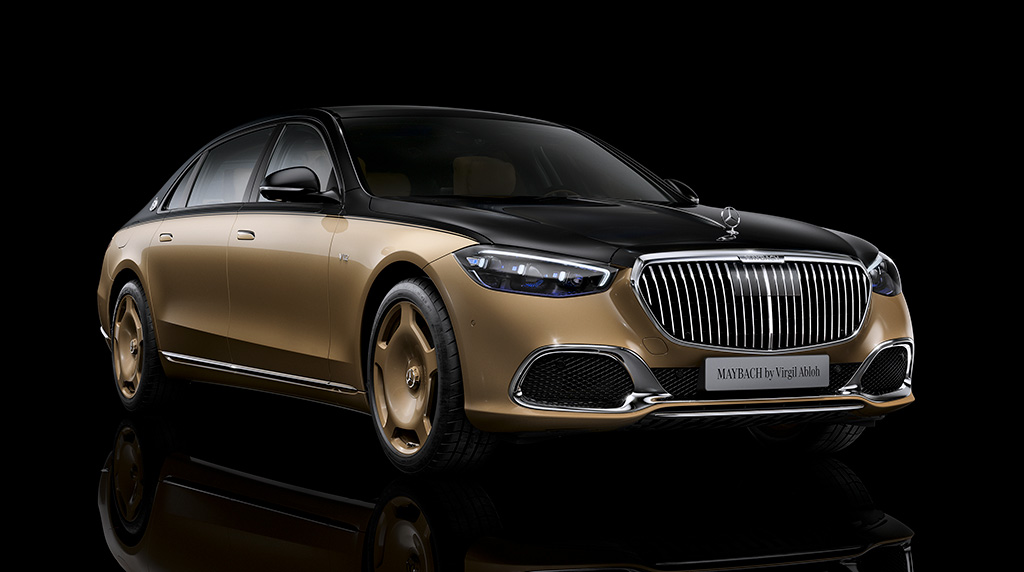While the volume strategy delivered more early buyers to the brand, it also had the effect of making the Mercedes brand less exclusive and therefore less able to price their way into the more elevated luxury car returns.
Taking its cue from the prices buyers have been prepared to pay during the present shortages of stock, Mercedes has seen that, given the right incentive, its buyers are prepared to pay whatever it takes to secure the most desirable variants.
The company therefore will drop its entry-level variants in a push to boost investment returns from its higher-end vehicles as it seeks greater profit yield on each car sold. The higher yield will allow the company to invest more in the technology that will make its cars even more desirable and exclusive.
The brand unveiled its plans to major investors last week, placing the drive for greater profitability on the top-end segment, including S-Class, AMG and G-Class.
Mercedes-Benz Group chairman and CEO, Ola Kallenius, said in a statement that: “We are further sharpening the focus of our business model and product portfolio in order to maximise the potential of Mercedes-Benz even in challenging conditions.”
“At the heart of that is our goal to build the world’s most desirable cars.”
Variants for entry-level compact models such as the A-Class will be cut to four from seven, the company said.
Mercedes makes numerous entry-level variants, including the CLA Shooting Brake wagon and SUV models, including the compact GLA.
It first outlined its plans to shift away from smaller cheaper cars in 2020, when it announced plans to pursue significant growth for its sub-brands AMG, Maybach, G and EQ.
The updated strategy includes the launch of the Mythos series, reserved for highly-exclusive collectible cars.
By focusing on luxurious high-margin vehicles, Mercedes-Benz aims to achieve an operating margin of 14 per cent by 2025. It will divert 75 per cent of its investments to develop new luxury models.
The top end luxury segment includes all AMG and Maybach models, alongside EQS, S-Class, GLS and G-Class.
Mr Kallenius said: “Most luxury companies build their portfolio on the basis of one or two true icons.
“Mercedes-Benz has the good fortune to have multiple iconic products and brands at the upper end of its portfolio – such as the S-Class, the SL, the G as well as the AMG and Maybach brands.
“We see great potential here to expand our ‘top-end’ portfolio with even more fascinating products for our customers.”
Core luxury includes the C-Class and E-Class, which typically have the highest sales volumes. With the Core luxury segment, the company plans to go electric on an accelerated timescale, leveraging the EVA2 platform that underpins the EQE and EQE SUV.
A new E-Class comes to market next year, following the recent launch of new C-Class.
The strategy builds on a trend that has seen profitability pushed to record levels during the semiconductor shortage.
While Mercedes sold 10 per cent fewer vehicles in the first quarter compared to a year ago, profit surged 20 per cent.
Mercedes said it forecasts its vehicle sales to increase by 60 per cent by 2026 and this boost would push its operating margin to about 14 per cent by mid-decade.
It acknowledged that headwinds including raw-material prices, supply-chain bottlenecks and broader economic risks posed a threat to the targets.
But some analysts warn that the push toward more profitable luxury vehicles might be misguided.
“The high margins of car manufacturers are not sustainable and will fall again significantly when the car market returns to normal,” Nord/LB analyst Frank Schwope said in an email.
Achieving a higher return would help Mercedes finance the expensive shift to EVs and digital car technology.
But there are risks as global economic forecasts deteriorate, potentially undermining projections by BCG Consultancy that sees growth in the luxury-car segment three times faster than for normal vehicles.
“The premium carmaker from Stuttgart has a simple plan: make fewer small cars and make more large cars,” said Bernstein analyst Daniel Roeska, who sees a 30 per cent upside to the company’s current share price of around 65 euros ($A98).
By 2025, the average price for a car may rise to more than $89,000 ($A126,000) from $74,000 ($A104,500) in 2021,” he said.
Fewer vehicle variants will also mean the company will reduce inventory complexity and allow different factories to meet the needs of customers in various regions.
Customers will be offered pre-set packages when configuring their cars based on regional preferences, simplifying production in comparison to build-to-order models.
Mercedes announced a move to put 75 per cent of investment into top-end vehicles and its highest-selling segment of C-Class and E-Class models.
Mercedes chief technical officer Markus Schäfer said: “The willingness to pay is there. Many, many customers are ready to pay the extra price for luxury.”
He said there was also a priority to reduce the cost of EV batteries.
“I would like to halve the size and weight of batteries in cars,” he said.
“Taking more control of the supply chain through direct supply contracts and being more strategic about material choice would also help lower costs,” he said.
Mr Schafer said that in reducing EV costs, he predicted that cobalt, a common battery material, was likely to be phased out of production.
Rising prices for cobalt, sourced mostly from Democratic Republic of Congo, are pushing battery makers to explore cobalt-free technology.
Mercedes earlier this week said it was the first automotive customer of battery startup Sila Nanotechnologies’ silicon anode chemistry.
After the successful separation of Mercedes and its truck division, management is intensifying efforts to compete with Tesla.
The company aims to have battery-powered models in all its segments this year, a staging post for its ambition to sell only electric cars by 2030.
While the automaker is Europe’s most valuable company brand, according to consultancy Interbrand, Tesla boasts a market capitalisation 10 times greater than Mercedes.
According to Bloomberg Intelligence, Volkswagen Group’s Porsche sports-car unit would command a valuation of about 95 billion euros ($A140b) compared to Mercedes at about $A100 billion.
By Neil Dowling and John Mellor














 Read More: Related articles
Read More: Related articles

